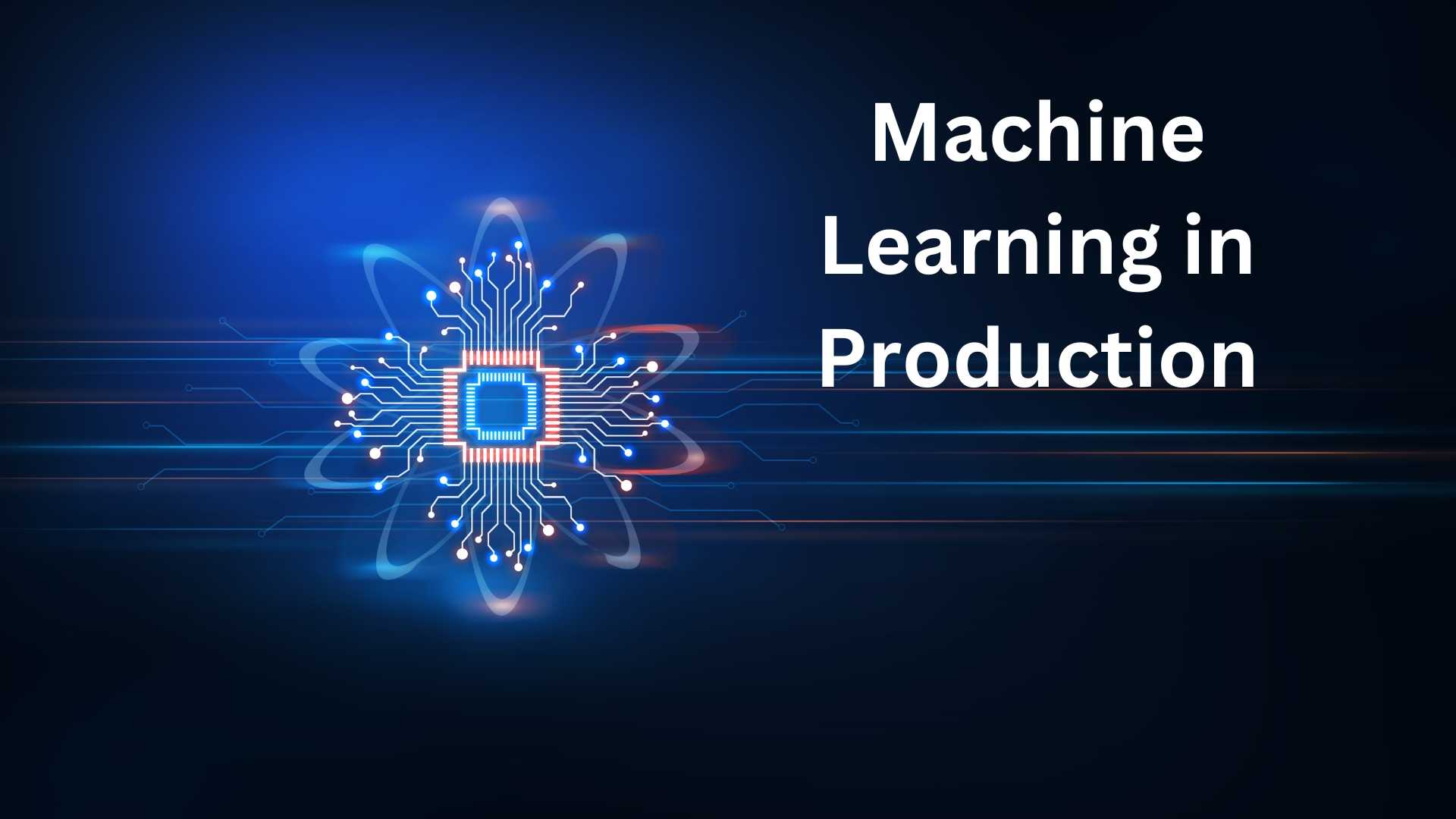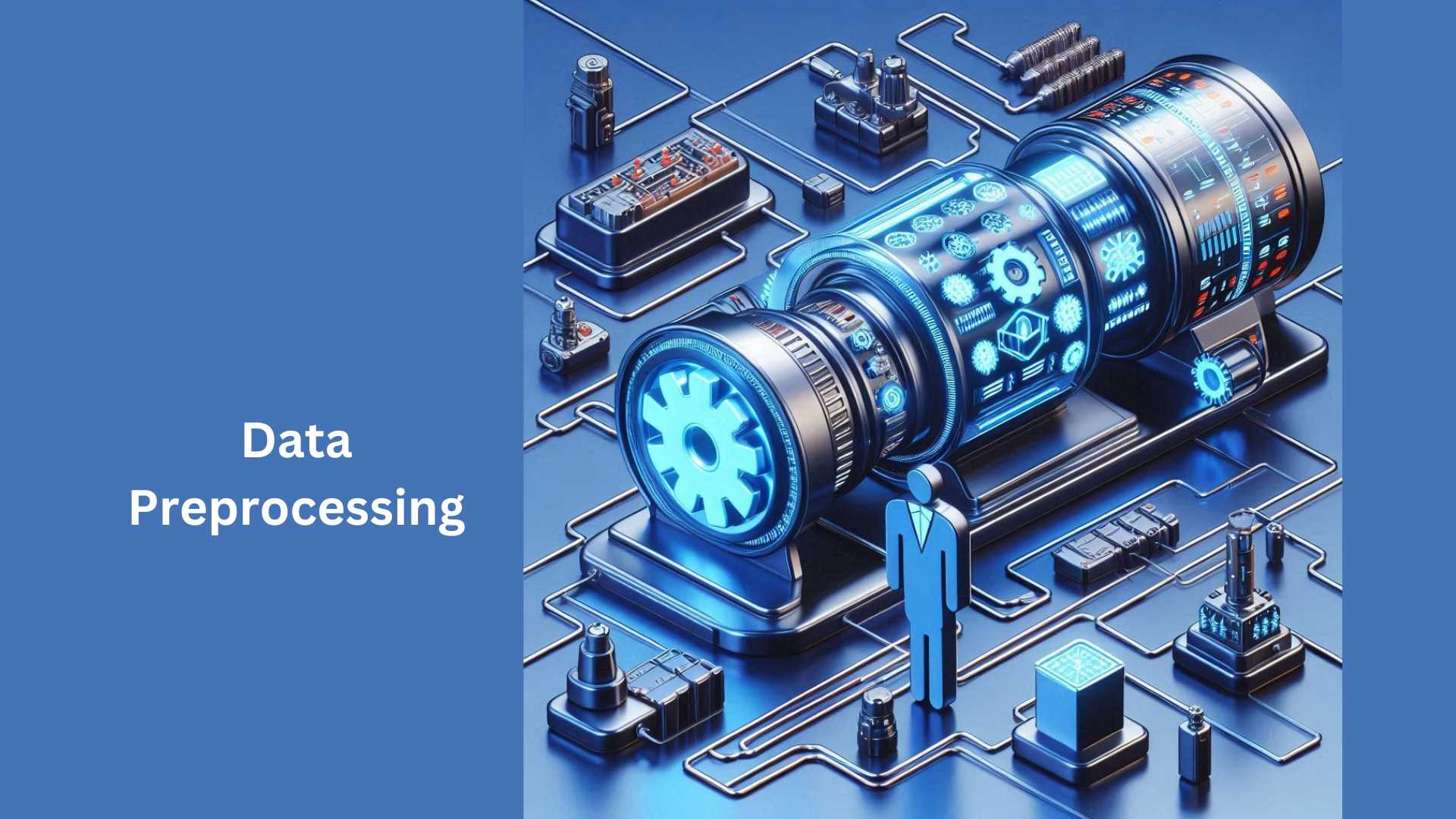In today’s landscape the use of machine learning, in real-world applications has become more widespread giving rise to an era called Machine Learning in Production (MLinProd). This shift signifies the merging of data science and software engineering, where machine learning models are not only created and trained but also put into action and managed within applications. In this article, we will explore the concept of MLinProd, its significance the obstacles it brings forth, and the advantages it offers when implemented.
What is Machine Learning in Production (MLinProd)?
Machine Learning, in Production (MLinProd), is the application of deploying machine learning models into systems to make real-time predictions or decisions. Unlike the machine learning workflows that primarily concentrate on model development and evaluation, MLinProd expands these processes to cover the lifecycle of a machine learning model. This includes development, training, deployment, and continuous monitoring in production environments. The goal is to integrate machine learning models into existing software systems to ensure reliability, scalability, and optimal performance, in real-world scenarios.
Why is MLinProd Important?
Machine learning, in production (MLinProd) plays a role in unleashing the potential of machine learning technologies and creating tangible value for businesses. There are reasons why MLinProd holds significance;
1. Real-time decision-making; MLinProd enables organizations to leverage the capabilities of machine learning models in time empowering timely and well-informed decision-making based on data-driven insights.
2. Operational Efficiency; Through automating tasks and processes MLinProd enhances efficiency reduces the need for manual intervention and streamlines workflows across various industries and domains.
3. Enhanced Customer Experience; By deploying machine learning models, in production environments organizations can personalize user experiences provide targeted recommendations, and optimize products and services to meet the evolving needs of customers.
4. Advantage; Embracing MLinProd empowers businesses to stay ahead of the competition by utilizing data-driven insights to drive innovation optimize operations and foster business growth.
These factors demonstrate why MLinProd plays a role in harnessing the power of machine learning for success.
Overcoming Machine Learning Deployment Key Challenges
- One of the main challenges organizations face when implementing MLinProd is deploying machine learning models into production environments while maintaining consistency, reliability, and scalability. This becomes more complex when dealing with large-scale systems and diverse infrastructure.
- Another challenge is monitoring the performance of deployed models, in time and managing model drift, degradation, and updates over time. Robust monitoring and maintenance processes are essential for this.
- Ensuring the quality, integrity, and privacy of data used to train and deploy machine learning models is another challenge. It is necessary to achieve reliable predictions in production environments.
- Lastly understanding and interpreting the decisions made by machine learning models in production is important, for building trust ensuring compliance, and addressing concerns. This becomes particularly crucial in regulated industries.
Overall while MLinProd has transformative potential organizations need to address these challenges to ensure implementation.
Benefits of Implementing ML in Production
Implementing machine learning, in production (MLinProd) offers advantages for organizations seeking to harness the power of machine learning at scale despite the challenges it may present. Some key benefits include;
1. Enhanced Agility; MLinProd allows organizations to swiftly respond to shifting market dynamics, customer preferences, and business requirements by deploying and updating machine learning models quickly and efficiently.
2. Cost Savings; By automating processes optimizing operations and improving resource utilization MLinProd helps organizations reduce costs enhance efficiency and maximize their return on investment (ROI) from machine learning initiatives.
3. Insights Driven by Data; Deploying machine learning models in production environments empowers organizations to derive insights from data uncover patterns and make informed decisions that drive business growth and foster innovation.
4. Performance; MLinProd ensures that machine learning models can seamlessly handle increasing data volumes, user interactions, and computational demands while maintaining performance levels and reliability.
5. Continuous Improvement; Through monitoring and updates based on real-world feedback and performance metrics MLinProd enables organizations to iterate refine and optimize their machine-learning solutions over time—driving improvement and fostering innovation.
In conclusion, Machine Learning in Production (MLinProd) represents an approach to deploying, managing, and leveraging machine learning models, in real-world applications. Though it may bring forth its share of difficulties and intricacies the advantages of integrating MLinProd are significant. This implementation provides organizations with the chance to tap into capabilities to enhance efficiency and secure a competitive advantage in today’s data-centric environment.
Machine Learning In The Production Lifecycle Know
Development; Feature Engineering and Data Preparation
Feature engineering plays a role in developing machine learning models. It involves extracting, transforming, and selecting features from data. This step requires expertise and creativity to gain insights from the data. Data preparation ensures that the data is clean, preprocessed and formatted appropriately for training machine learning models. Both feature engineering and data preparation lay the groundwork for building robust machine-learning models.
Model Training and Selection
Model training involves using data to train machine learning algorithms while optimizing model parameters. It includes selecting algorithms and techniques based on the problem domain and characteristics of the data. Model selection entails evaluating models to identify the one that performs best according to predefined metrics such as accuracy, precision, and recall. This iterative process aims to find the model for deployment in real-world production environments.
Evaluation and Testing
Evaluation and testing are steps in assessing how trained machine learning models perform on unseen data while maintaining their ability to generalize. Evaluation metrics such as accuracy, F1 score, and AUC ROC are utilized to measure a model’s performance, on datasets.
Testing involves conducting a variety of tests, including unit tests, integration tests, and end-to-end tests to verify the behavior and functionality of the model in scenarios. Thorough evaluation and testing ensure that ML models meet the required criteria for deployment in real-world applications.
Deployment; Packaging and Containerization of Models
To ensure deployment machine learning models are. They are encapsulated along with their dependencies into containers. By using containers to package models organizations ensure consistency across environments. Enable efficient scalability. Containerization also simplifies version control. Allows for integration with orchestration tools like Kubernetes. This facilitates streamlined deployment and management of machine learning applications.
Deployment; Selecting Infrastructure and Orchestration
Choosing the infrastructure and orchestration tools is critical for the deployment of machine learning models. Organizations need to consider factors such as scalability, performance, cost-effectiveness, and security when deciding between cloud platforms or on-premises servers as their infrastructure options. Orchestration tools like Kubernetes provide automation capabilities along with management features that enable deployment, scaling, and monitoring of machine learning workloads across environments.
Deployment; Continuous Integration and Continuous Delivery (CI/CD)
Implementing integration and continuous delivery (CI/CD) pipelines is essential, for automating the process of machine learning models.
Continuous Integration and Continuous Deployment (CI/CD) practices empower developers to merge code changes run automated tests and swiftly deploy updates to production environments. By adopting CI/CD organizations can ensure iterations maintain software quality standards and enhance the agility of their machine learning deployment workflows.
Operational Excellence; Monitoring and Logging
Monitoring system metrics and logging events are components of achieving excellence in any system. Through monitoring and event logging organizations can gain insights, into system performance detect potential issues early on, and ensure the reliability of their systems. Effective monitoring and logging strategies enable problem-solving, optimize resource utilization, and provide data for continuous improvement initiatives as well as informed decision-making.
Drift Detection & Model Performance: Key Strategies
Evaluating model performance regularly while detecting any drift is vital for maintaining the effectiveness of machine-learning models. By tracking performance metrics against established baselines organizations can identify deviations from expected behavior promptly. This allows them to make adjustments to ensure that models remain accurate and reliable over time by adapting to changes, in data distributions or evolving user requirements.
A/B Testing and Rollbacks
A/B testing provides organizations with a controlled environment to compare the performance of software versions or models. By testing variations and analyzing outcomes organizations can make decisions based on empirical data about which changes should be implemented.
Rollbacks serve as a safety measure that allows organizations to revert to versions, in case unexpected issues or negative outcomes arise. This helps minimize disruptions and maintain stability within the system.
Explainability and Interpretability
When it comes to machine learning models ensuring their explainability and interpretability is crucial. It builds trust and understanding in the predictions they generate. Organizations can achieve this by employing techniques such as analyzing feature importance using interpretability frameworks and implementing model architectures. These approaches provide insights, into how the models make decisions enabling stakeholders to comprehend their behavior validate outputs, and effectively address any biases or ethical concerns that may arise.
Effective Governance for Secure Machine Learning Operations
Governance; To ensure the security, compliance, and integrity of machine learning operations it is crucial to establish governance practices. By implementing policies and procedures organizations can effectively manage risks, safeguard sensitive data, and comply with regulations, throughout the ML lifecycle. Governance frameworks include measures like access controls, data privacy protection, and audit trails to promote transparency and accountability in ML deployments.
Security and Compliance; When it comes to machine learning operations, security and compliance are of importance. The protection of data privacy, prevention of access, and adherence to requirements are key considerations. Organizations can address these concerns by implementing encryption measures, and access contand rols conducting security audits to identify risks. It is also essential for organizations to comply with regulations such as GDPR (General Data Protection Regulation) HIPAA (Health Insurance Portability and Accountability Act) PCI DSS (Payment Card Industry Data Security Standard) to maintain trustworthiness among stakeholders and customers.
Model Versioning and Tracking; Management of the lifecycle of machine learning models relies on effective model versioning and tracking mechanisms. By keeping track of model versions and changes made during development processes organizations ensure reproducibility, traceability, and auditability. Utilizing version control systems, and metadata repositories along, with model registries enables teams to collaborate seamlessly while experimenting with versions confidently before deploying models.
Ethics, in Machine Learning; When it comes to machine learning operations ethics are of importance. They guide our decisions and actions ensuring that fairness, transparency, and accountability are maintained. It is crucial for organizations to carefully evaluate how their ML applications may impact society and address any biases, discrimination, or privacy concerns. By following AI frameworks and guidelines we can responsibly. Deploy AI systems that promote trust and inclusivity.
Tools and Technologies Essential, for MLOps Frameworks
In the changing world of machine learning operations (MLOps) it is crucial to utilize the tools and technologies to ensure efficient development, deployment, and management of machine learning models in production environments. In this article, we will explore the tools and frameworks that play a role in orchestrating MLOps workflows and optimizing model performance.
1. MLOps Frameworks;
MLOps frameworks serve as the foundation for managing machine learning operations by offering solutions for handling the lifecycle of machine learning models. Three prominent MLOps frameworks stand out;
- MLflow; Developed by Databricks MLflow is an open-source platform that provides features like tracking, experimentation, and deployment capabilities for machine learning projects. With MLflow teams can easily manage experiments reproduce results and seamlessly deploy models across environments.
- Kubeflow; Built on top of Kubernetes Kubeflow is an open-source machine learning platform designed to simplify large-scale deployment and management of ML workflows. It offers tools for building, training, and deploying ML models in Kubernetes clusters—making it an excellent choice for production-grade MLOps.
- Metaflow; Developed by Netflix Metaflow is a framework focused on human-centric approaches, to building and managing real-life data science projects. Metaflow simplifies the intricacies of distributed computing, enabling data scientists to focus on developing and experimenting with models while taking care of scalability and reproducibility in the background.
Containerization: Key Technology The Best Insights
2. Containerization; Containerization has brought a revolution to software development and deployment by bundling applications and their dependencies into containers. Two key containerization technologies are;
- Docker; Docker stands as a leading platform, for containerization allowing developers to package applications and their dependencies into containers ensuring consistency and reproducibility across environments. Docker containers encompass everything required to run an application making deployment straightforward and efficient.
- Kubernetes; Kubernetes serves as an open-source tool for container orchestration that automates the deployment, scaling, and management of containerized applications. Kubernetes offers features like service discovery load balancing and self-healing facilitating the orchestration of workloads in production settings.
3. Orchestration Tools: To Automate complex workflows Here
Orchestration tools. Automate complex workflows to ensure execution and coordination of tasks. Two popular orchestration tools used in MLOps are;
- Airflow; and Apache Airflow is an open-source platform for workflow orchestration that allows users to define, schedule, and monitor workflows represented as directed graphs (DAGs). Airflow provides a range of operators and integrations, for orchestrating data pipelines and ML workflows.
- Prefect; Prefect is a framework, for managing, scheduling, and overseeing data workflows. It offers task coordination resilience to faults and the ability to execute tasks distributedly. These features make it an ideal choice for managing workflows in MLOps.
4. Monitoring Platforms;
In MLOps monitoring platforms are crucial for tracking the performance, health, and behavior of machine learning models in production. Two adopted monitoring platforms are;
- Prometheus; Prometheus is an open-source toolkit designed for monitoring and alerting purposes. It. Stores time series data, allowing users to query, visualize, and receive real-time alerts on metrics. With its scalability and seamless integration, with MLOps tools Prometheus provides monitoring capabilities.
- Grafana; Grafana is an open-source analytics and visualization platform that empowers users to create dashboards and graphs for monitoring and analyzing metrics from data sources. By integrating with Prometheus as other monitoring systems Grafana delivers rich visualization capabilities specifically tailored for monitoring machine learning models.
To know more about Please read End-To-End MLOps Tools: The Ultimate Guide
5. Deciphering ML Decisions: Explainability Frameworks Here
Explainability frameworks play a role in comprehending and interpreting the decisions made by machine learning models in high-stakes applications.
Two known frameworks focus on explaining the output of machine learning models;
1. SHAP (Shapley Additive exPlanations); SHAP is a game method used to explain how each feature contributes to the model’s prediction. By calculating SHAP values we gain insights, into the significance and impact of features on the model’s predictions. This allows users to better understand and trust the decisions made by the model.
2. LIME (Local Interpretable Model Explanations); LIME is a framework that can interpret predictions made by black box machine learning models at a level. It achieves this by approximating how the underlying model behaves around an instance. By providing explanations LIME helps users understand why a certain prediction was made by the model.
In summary, these important frameworks serve as the foundation for MLOps practices, which enable organizations to effectively build, deploy, and manage machine learning models, in production environments. By utilizing MLOps frameworks alongside containerization orchestration tools monitoring platforms and explainability frameworks data teams can streamline their workflows while ensuring models and driving insights based on data-driven approaches.
ML in Production: Trends & Emerging Technologies
As companies continue to leverage the potential of machine learning (ML) to drive innovation and gain an edge the landscape of ML implementation in production is rapidly evolving. From advancements in deploying and monitoring models to integrating AI with edge computing, the future of ML in production holds a range of opportunities and challenges. Let’s explore the trends and emerging technologies that are shaping the future of deploying and operating ML.
ML in Production Trends and Emerging Technologies
- Automated Deployment of ML Models; In the future, we can expect the adoption of platforms that automate the deployment process for ML models. These platforms will make it easier for organizations to deploy models quickly efficiently and at scale while ensuring reliability.
- AI Integration with Edge Computing; With the increasing number of Internet of Things (IoT) devices and the need for real-time insights integrating AI with edge computing will become more prevalent. Edge AI solutions will allow organizations to process data locally on edge devices reducing latency and bandwidth requirements while maintaining data privacy and security.
- Explainable AI (XAI); As AI applications become more prevalent in domains like healthcare and finance there will be a growing demand, for AI (XAI).In the realm of XAI (Explainable AI), organizations will be able to gain insights and explanations into the decision-making processes of AI models. This will contribute to increased transparency, trust, and compliance, with regulations.
Looking ahead to the future of ML in production federated learning will gain momentum. This decentralized approach allows model training across distributed edge devices without the need, for data aggregation. By doing it addresses concerns related to privacy while facilitating collaborative model training using data sources.
Another key aspect that will shape ML in production is model monitoring and optimization. Organizations will employ monitoring tools and techniques to track the real-time performance of their models detect anomalies and initiate retraining or fine-tuning when necessary.
Challenges and Opportunities Of the ML In Production
One of the concerns that arise with the integration of AI and edge computing is data privacy and security. Organizations must establish security measures and compliance frameworks to safeguard data and also ensure adherence, to regulations.
Another critical aspect is model interpretability and bias mitigation as AI applications play a role in decision-making processes. Investing in tools and techniques that can explain AI decisions detect biases and address them will be essential for organizations.
When it comes to deploying ML models in real-world environments, scalability and also performance remain challenges for high-volume real-time applications. However, emerging technologies like federated learning and edge AI offer promising opportunities to tackle these challenges while ensuring scalability and optimum performance.
The rapid evolution of ML technologies has resulted in a shortage of professionals in the field. To bridge this gap organizations must invest in upskilling and reskilling their workforce to meet the increasing demand for ML expertise. This step is crucial for implementing ML models in production.
Ethical AI: Navigating Challenges and Opportunities
With AI applications having an impact on aspects of society such, as employment, healthcare, and education it becomes imperative to consider implications. The ethical aspects associated with AI use will become increasingly important as time goes on.
Organizations must give importance to considerations. Actively involve stakeholders to ensure responsible deployment of AI and minimize potential risks. In summary, the prospects of machine learning, in applications are extremely promising with trends like automated deployment, edge AI, and also continuous monitoring driving innovation and transformation.
However, it is crucial to address challenges such as data privacy, bias, and scalability to fully unleash the potential of machine learning in settings and reap its benefits for society as a whole. By staying updated on emerging technologies, investing in talent development, and prioritizing ethics organizations can navigate the evolving landscape of machine learning in applications and also unlock new opportunities, for growth and innovation.
Conclusion:
In conclusion, the implementation of Machine Learning, in Production (MLinProd) has the potential to bring about a transformation in industries. By integrating AI into real-world applications organizations can overcome challenges embrace emerging technologies and also explore avenues, for innovation and growth.
FAQs (Frequently Asked Questions)
1. What is machine learning for production?
Machine learning for production refers to the process of deploying machine learning models into real-world applications where they can be used to make predictions.
2. How do you deploy a ML model in production?
- Model Serialization: Serialize the trained model into a format that can be easily loaded and used within the production environment.
- API Development: Develop an API (Application Programming Interface) to expose the model’s functionality, allowing other software components to interact with it.
- Containerization: Package the model and its dependencies into a container (e.g., Docker) to ensure consistency and portability across different environments.
- Scalability: Deploy the model on scalable infrastructure (e.g., cloud-based services) to handle varying loads and volumes of data.
- Monitoring: Implement monitoring solutions to track the model’s performance metrics, data drift, and model drift in real-time.
- Version Control: Maintain version control for both the model and its associated code to track changes and facilitate rollback if necessary.
- Security: Implement security measures to protect the deployed model from unauthorized access and ensure data privacy and compliance with regulations.
- Deployment Pipeline: Set up automated deployment pipelines to streamline the process of deploying updates or new versions of the model.
- Testing: Conduct thorough testing of the deployed model to ensure its accuracy, reliability, and compatibility with the production environment.
- Documentation: Provide comprehensive documentation for developers and users to understand how to interact with the deployed model and its API.
3. What is ML for production specialization?
ML for production specialization typically refers to a focused area of study or training that prepares individuals to deploy machine learning models effectively in real-world production environments.
4. How to monitor machine learning in production?
Monitoring machine learning in production involves tracking various metrics and indicators to ensure that deployed models continue to perform optimally and meet the desired outcomes.
To Know more about Machine Learning Please visit the website Aitech.studio









